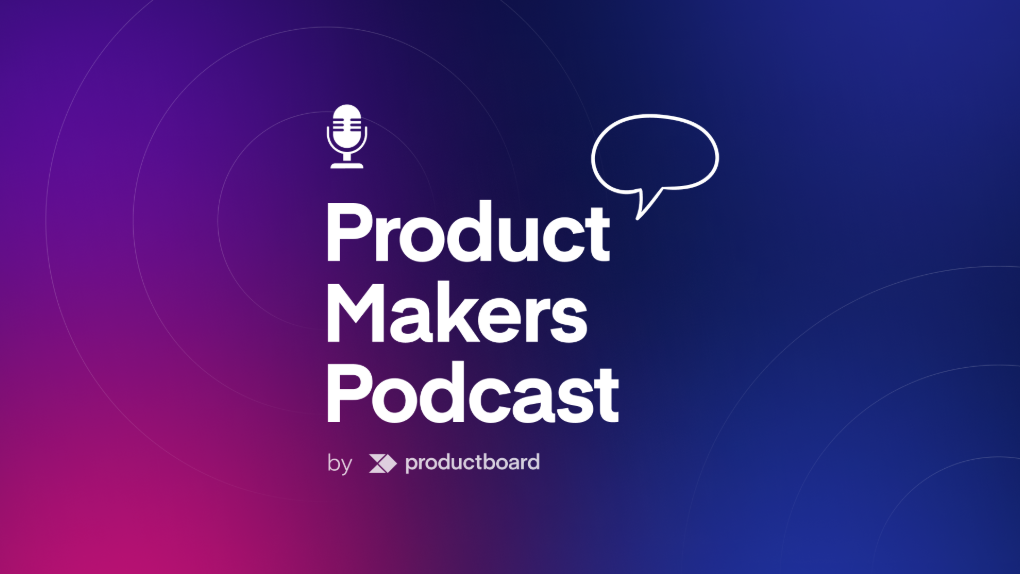Best practices for sharing roadmaps (and how Productboard can help)
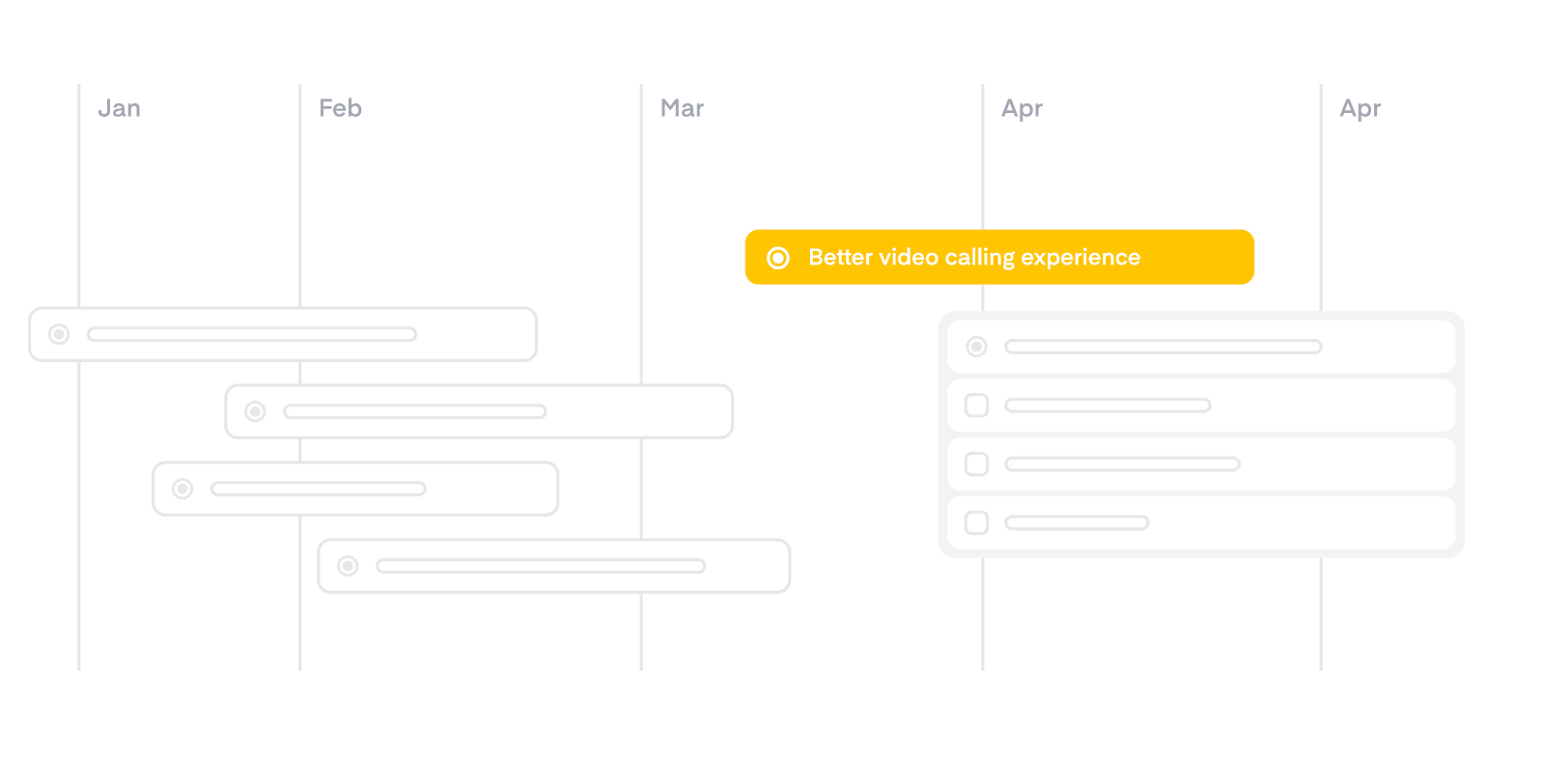
True product leaders ensure that product management is not a black box. They don’t just share their plan — they rally everyone around a common vision for where the product is headed and why. And a well-defined roadmap is their communication tool of choice.
That being said, roadmaps mean different things to different people. To make communication more efficient, product managers can create tailored roadmaps that provide just the right amount of detail for each stakeholder. Ideally, stakeholders should be able to access self-serve roadmaps and trust that they’re always up-to-date.
There are many benefits to this transparent approach. When you share your plans, you get feedback from a huge range of stakeholders. This turbo-charges your product discovery process, helping you crowdsource new problems or look at existing problems in a new light. And, when folks are looped in early, it’s easier to earn buy-in down the road.
Here’s a look at the above principles in practice, using examples of actual roadmaps we leverage here at Productboard.
Roadmaps for internal stakeholders
For customer-facing teams, we share release plan roadmaps that use time horizons to show when features will be released.
This level of detail allows customer-facing teams to set appropriate expectations with prospects and customers.
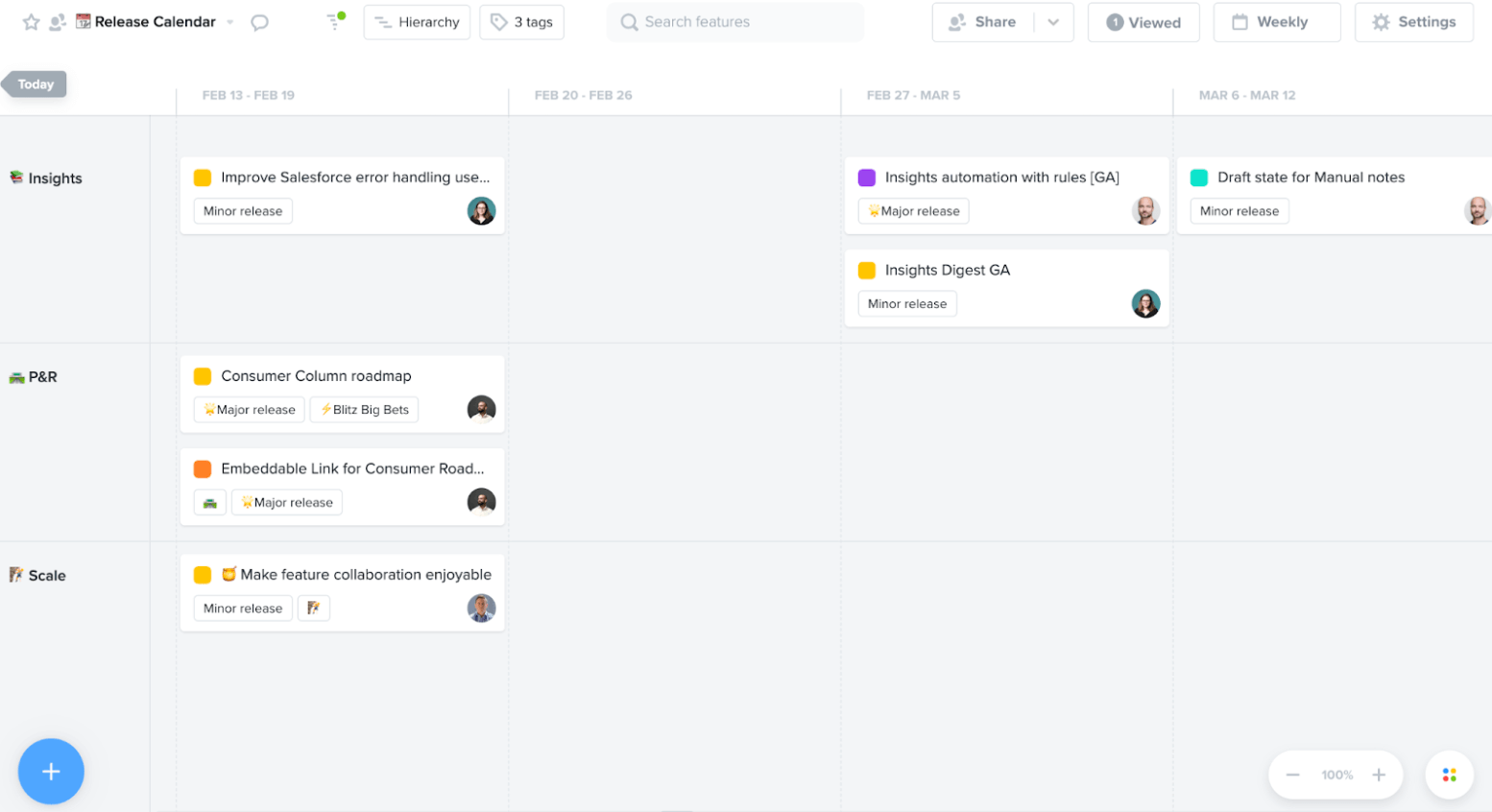
For engineering, product, and design teams, we share product objectives roadmaps that showcase objectives and features in a timeline format.
The goal is to rally these teams around shared objectives and what features we will deliver to achieve them.

Productboard’s cross-functional product teams — including product managers, designers, and engineers — use sprint plan roadmaps.
Each column below represents a sprint.
Sprint plan roadmaps showcase a tactical plan, providing more granular detail of what is being worked on and when.
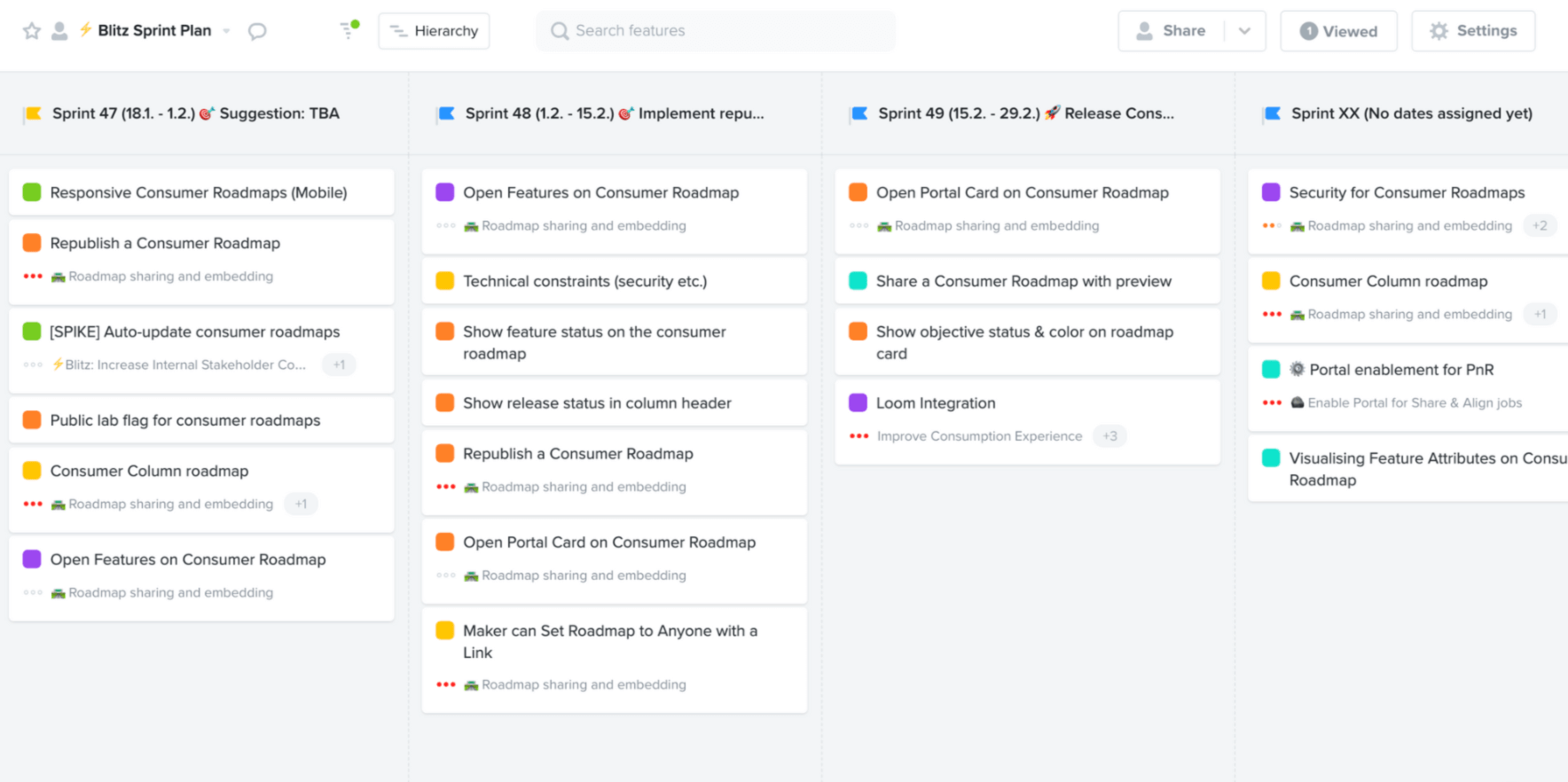
Common problems of sharing plans internally and how to solve them
When it comes to engaging internal stakeholders, the two most common issues that we hear product managers talk about are:
- Sharing timeframes: Most product managers worry that colleagues in sales and customer success may communicate the wrong timeframe to a customer or share too much information. In some cases, this can bind product teams to dates that they did not agree to. With Productbord, you can share column roadmaps with customer-facing teams and ensure they will only see information relevant to them.
- Endless repetition: Product managers will say things like “I’m constantly answering the same question for different stakeholders”. With Productboard, you can make roadmaps self-serve (and soon you can add a video voiceover to your plans).
Now let’s move on to roadmaps for external stakeholders.
Roadmaps for external stakeholders
Our public product Portal is where the public can come to see our ideas, what’s coming next, and what we’ve released.
And the conversation is two-way. If anyone has thoughts, they are encouraged to leave feedback.
Our Portal has become a main source for our discovery interviews and serves as evidence for many of our product decisions.
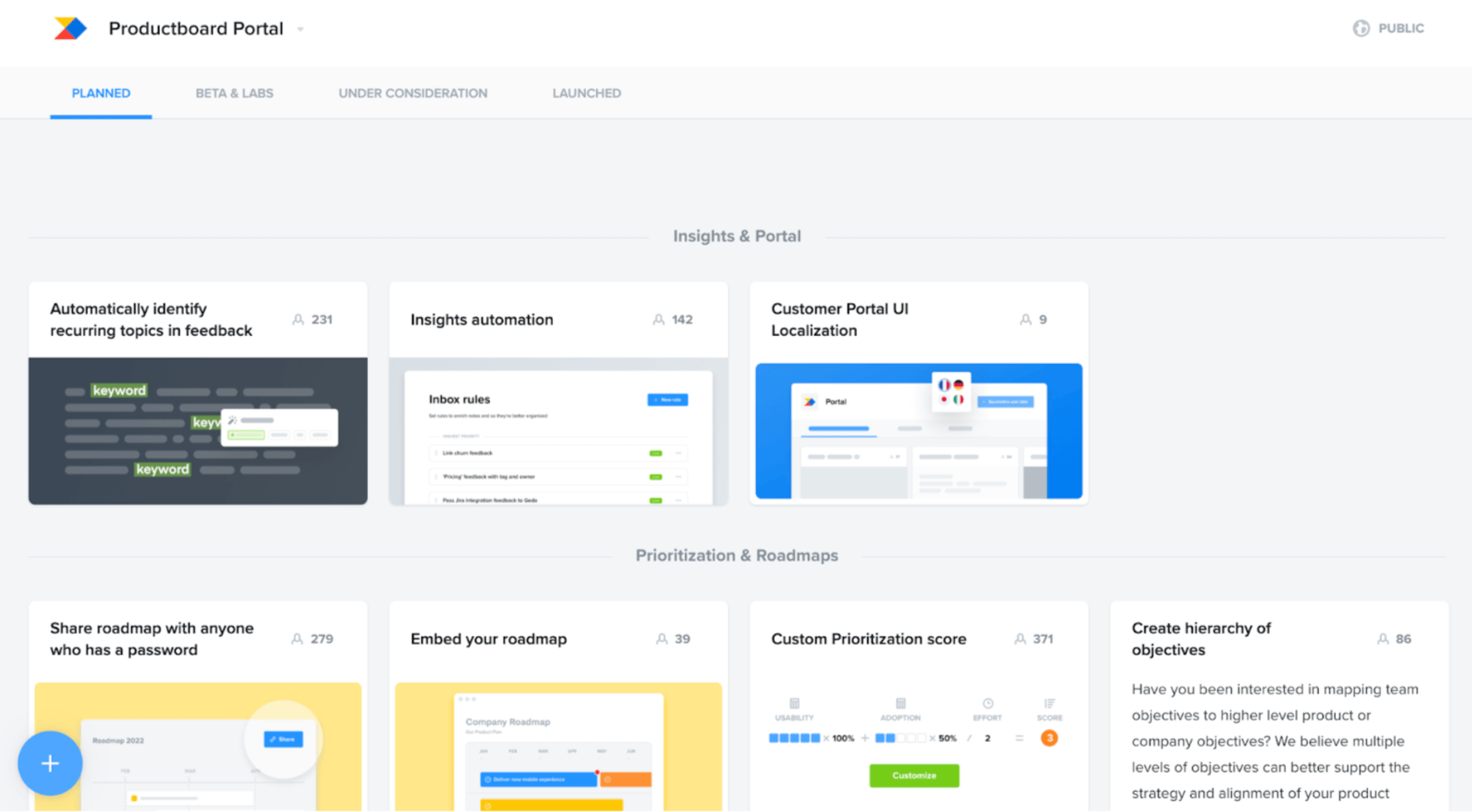
For customers and prospects looking for details like timeframes, objectives, or product specs, we use self-serve, customer-facing roadmaps.
Once these are approved for sharing, anyone with a link can easily access them.
This saves our product managers a lot of time and aligns the product org around what is best for our closest customers.
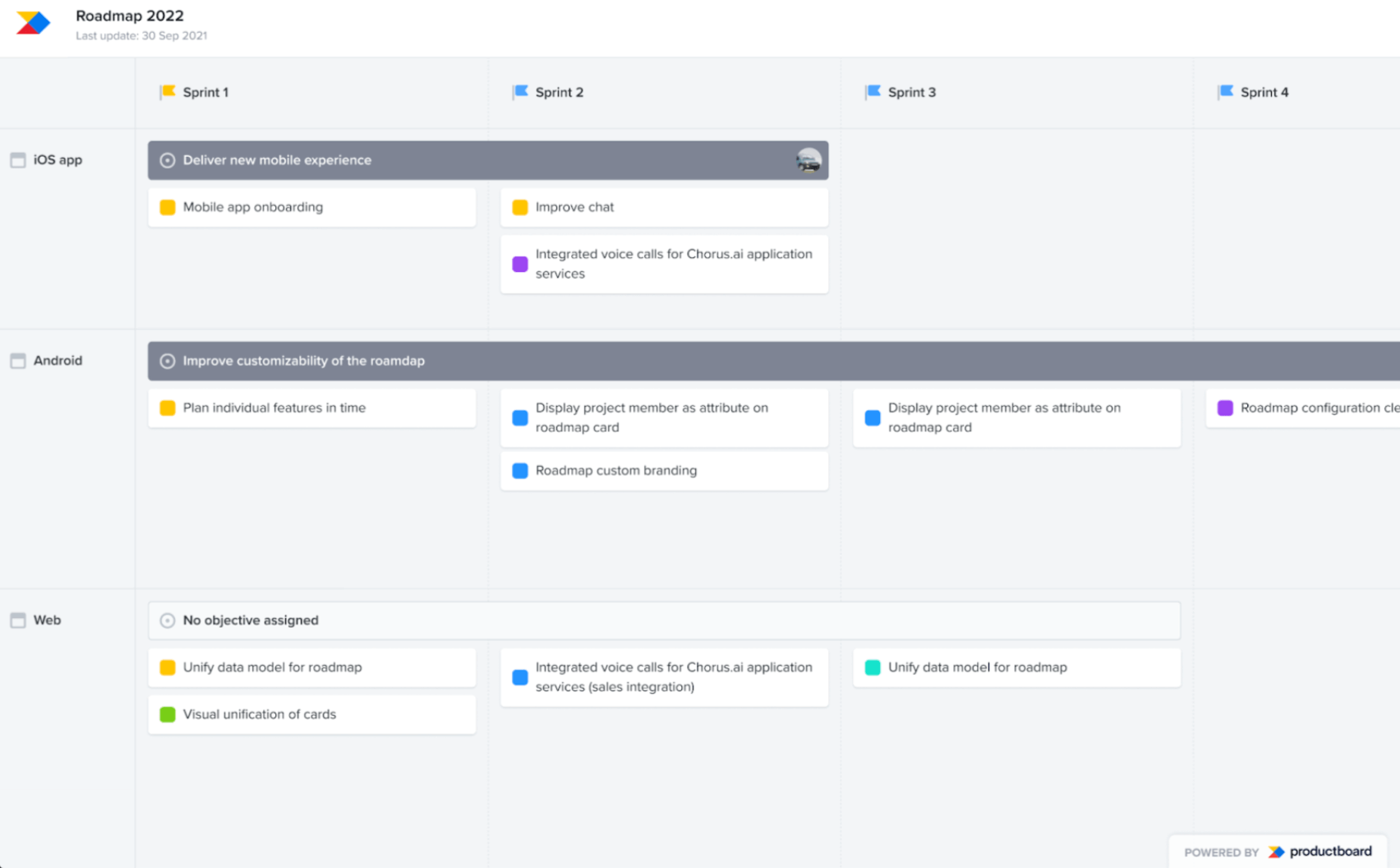
Benefits to transparency in product management
- Broader alignment means better outcomes: When you share plans with external stakeholders, you increase buy-in and get feedback early from a huge range of stakeholders. And you don’t just need to get alignment from your internal stakeholders, you should be getting alignment from your product community — customers, prospects, partners, etc. By factoring in the opinions of your external stakeholders, you’re sure to better align on what is valuable to them.
- Crowdsource problems & solutions: When you’re transparent, you benefit from the help of engaged communities who can help you find new problems to solve or look at existing ones in a new light.
- Attract talent: Tell people what you’re doing because some of them will want to help you build it — they might even know more about it than you do.
- Turbo-charge product discovery: By being transparent with the public, you can encourage people to join your discovery sessions, share their pains with you, and ultimately give you more qualitative and quantitive insights to build better products. We achieve a 20-30% conversion rate to discovery interviews from our Portal insights.
- Better marketing: Marketing doesn’t start when you launch a product, it starts when you share the idea with your product community. The Portal is the ideal place to get customers and prospects excited about your plans, and for product managers and product marketing managers to drive marketing efforts.
Let’s be clear about what maximizing stakeholder engagement is not. It is not about just sharing vanity metrics once a quarter. It doesn’t mean that you expose your trade secrets and strategy to your competitors. Far from it. Building in public means that you show curated content to each audience and share only what you need to in order to achieve the outcomes mentioned above.
Common problems of sharing plans externally and how to solve them
Now let’s cover the two most common hesitations we hear from makers who are not yet converted to the “build in public” ethos:
“We don’t want our competitors to know x, y, or z”: It’s a legitimate concern, but it doesn’t hold in 90% of cases. As a maker, you should be able to communicate a public-facing description of almost any idea. Maybe you can’t talk about your upcoming “Slack integration release for December,” but you can talk about how “we’re improving communication capabilities next quarter”. In Productboard, you can choose to show Portal cards on your roadmap, which is the perfect place to tell your customer-facing story.
“It’s too much effort to maintain public-facing assets”: If you are in a small organization and you’re the only product manager, this is a legitimate concern. However, once you have some scale, it’s a no-brainer to invest in public-facing assets — namely a public Portal and customer-facing Roadmaps. Once these are set up, it’s easy to maintain them in Productboard.
—
The job of aligning and collaborating with stakeholders can be tough for product managers, but tools like Productboard are making it easier than ever.
Request a personalized demo to learn more.





